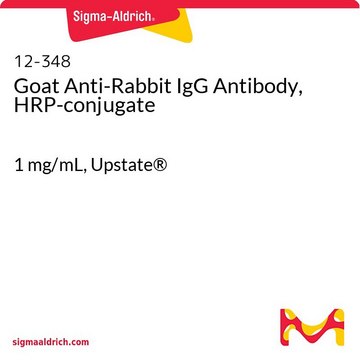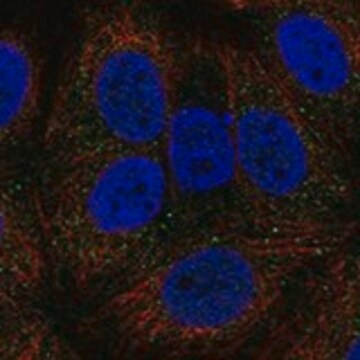MABE1121
Anti-Ago1 Antibody, clone 4B8
clone 4B8, from rat
Synonym(s):
Protein argonaute-1, Argonaute1, hAgo1, Argonaute RISC catalytic component 1, Eukaryotic translation initiation factor 2C 1, eIF-2C 1, eIF2C 1, Putative RNA-binding protein Q99, Ago1
About This Item
Recommended Products
biological source
rat
Quality Level
antibody form
purified immunoglobulin
antibody product type
primary antibodies
clone
4B8, monoclonal
species reactivity
human
technique(s)
western blot: suitable
isotype
IgG2aκ
NCBI accession no.
UniProt accession no.
shipped in
wet ice
target post-translational modification
unmodified
Gene Information
human ... AGO1(26523)
General description
Specificity
Immunogen
Application
Epigenetics & Nuclear Function
RNA Metabolism & Binding Proteins
Western Blotting Analysis: A representative lot detected Ago1-containing messenager ribonucleoprotein (mRNP) complexes primarily in the low density fractions of sucrose gradient-fractionated HEK293 lysate (Höck, J., et al. (2007). EMBO Rep. 8(11):1052-1060).
Immunoprecipitation Analysis: Representative lots immunoprecipitated FLAG-tagged Ago1, but not FLAG-tagged Ago2, Ago3, or Ago4 (Ender, C., et al. (2008). Mol. Cell. 32(4):519-528; Beitzinger, M., et al. (2007). RNA Biol. 4(2):76-84).
RNA Binding Protein Immunoprecipitation (RIP): Representative lots co-immunoprecipitated Ago1-associated RNAs, including mRNAs, miRNAs, and snoRNAs from human cell lysates (Li, Z., et al. (2009). J. Virol. 83(24):12751-12758; Ender, C., et al. (2008). Mol. Cell. 32(4):519-528; Beitzinger, M., et al. (2007). RNA Biol. 4(2):76-84).
Quality
Western Blotting Analysis: 1.0 µg/mL of this antibody detected Ago1 in 10 µg of HeLa cell lysate.
Target description
Physical form
Storage and Stability
Other Notes
Disclaimer
Not finding the right product?
Try our Product Selector Tool.
Storage Class Code
12 - Non Combustible Liquids
WGK
WGK 1
Flash Point(F)
Not applicable
Flash Point(C)
Not applicable
Certificates of Analysis (COA)
Search for Certificates of Analysis (COA) by entering the products Lot/Batch Number. Lot and Batch Numbers can be found on a product’s label following the words ‘Lot’ or ‘Batch’.
Already Own This Product?
Find documentation for the products that you have recently purchased in the Document Library.
Our team of scientists has experience in all areas of research including Life Science, Material Science, Chemical Synthesis, Chromatography, Analytical and many others.
Contact Technical Service








